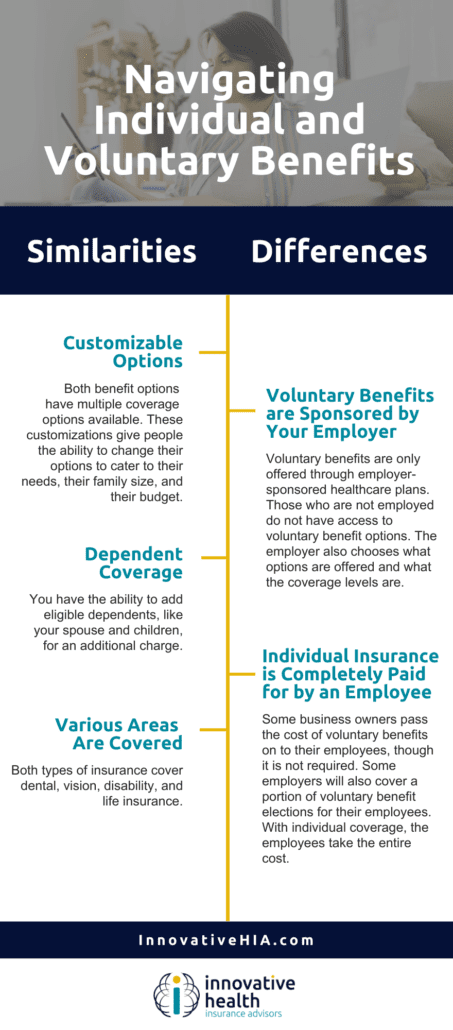Although you’ve likely heard of Obamacare, you may not know that Obamacare is synonymous with the Affordable Care Act. This healthcare law that passed in 2010 goes by a few different names. You may also see this law referenced as PPACA or ACA (the acronym for Affordable Care Act).
Below, let’s discuss what Obamacare or the ACA covers, its goals, when you can enroll, and more.
What Do Obamacare and the Affordable Care Act (ACA) Cover?
The Affordable Care Act was designed with three primary goals. To:
- “Make affordable health insurance available to more people…
- Expand the Medicaid program to cover all adults with income below 138% of the FPL
- Support innovative medical care delivery methods designed to lower the costs of health care generally.”
Additionally, there are sections of the ACA designed to help patients have access to affordable benefits. These sections include:
- Quality, Affordable Healthcare for All Americans
- The Role of Public Programs
- Improving the Quality and Efficiency of Healthcare
- Prevention of Chronic Disease and Improving Public Health
- The Difference Between the ACA and Obamacare
- Healthcare Workforce
- Transparency and Program Integrity
- Improving Access to Innovative Medical Therapies
- Community Living and Assistance Services and Supports Act (CLASS Act)
- Revenue Provisions
- Reauthorization of the Indian Healthcare Improvement Act
From these sections came the 10 essential benefits that are included in minimum essential coverage (Minor Medical), which is defined as “any insurance plan that meets the Affordable Care Act requirement for having health coverage.”
These 10 benefits include:
- Prescription drug coverage
- Pediatric services
- Preventative, wellness services, and chronic disease management
- Emergency services
- Hospital-stay coverage
- Mental health and addiction services
- Pregnancy, maternity, and newborn care
- Ambulance patient services
- Laboratory services
- Rehabilitative and habilitative services and devices
Why Was This Healthcare Law Created?
Obamacare was designed to provide basic and affordable coverage for all Americans. Before Obamacare, those with pre-existing conditions could be refused coverage or charged more for their plan.
Obamacare ensures that insurance companies allow those with pre-existing conditions to receive the same care as those without.
Now, minimum essential coverage plans exist that provide the services required by the ACA while simultaneously being affordable for employers and employees.
These plans help both parties stay healthy while also avoiding the fines and penalties that come along with not having health insurance (especially for Americans living in states with individual mandates).
After all, minimum essential coverage isn’t a one size fits all service. There are different options and levels to choose from to create a plan best suited for your specific needs.
Learn more by reading our article, “What is Minor Medical and What Does It Cover?”
When Can I Enroll in Obamacare?
Open enrollment is the one time of the year when employees can sign up for health insurance or change their health insurance plans.
If you choose not to enroll during the open enrollment period, your options to purchase coverage become limited. Why? You cannot purchase ACA-compliant coverage unless a qualifying event occurs.
Qualifying events include:
- Loss of a job
- Move to a new coverage area
- Birth of a child
- Loss of existing coverage
- Family event (i.e. marriage, divorce, or death)
Depending on state requirements, employees can take advantage of open enrollment for the following year starting November 1 until approximately January 15th. Again, open enrollment varies on a state-by-state basis. States like California, for example, extend their open enrollment dates to January 31.
Read on to learn what happens if your employee misses open enrollment.
How does the Individual Mandate Affect Obamacare?
When Obamacare was first implemented, it contained a clause that required Americans to have health insurance. Those who didn’t have health insurance were required to pay a tax penalty. This tax penalty was repealed in 2017.
However, the individual mandate is still in effect for some states in the U.S.
Residents living in the following states have implemented individual mandates.
- California
- The District of Columbia
- Massachusetts
- New Jersey
- Vermont
- Rhode Island
This means that people living in the states mentioned above must have health insurance or face state-mandated tax penalties. Read on to learn more about ACA employer penalties.
At Innovative HIA, our goal is to provide affordable ACA-compliant benefits to our clients. For more information about the plans that we offer or to enroll, get in touch with one of our brokers today.




